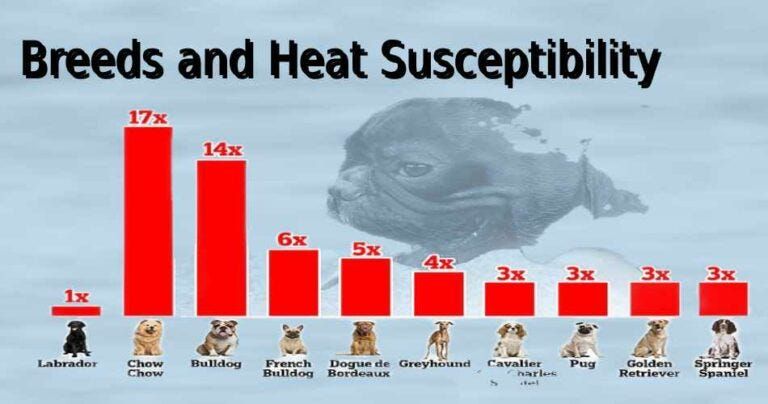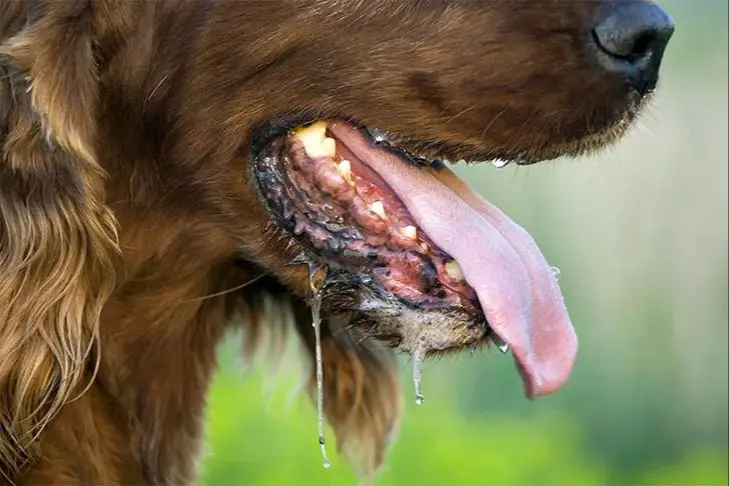Introduction
Dogs primarily sweat through their paw pads to regulate their body temperature. This is because dogs have sweat glands located in the paw pads called merocrine glands. When a dog is hot, these glands release sweat to cool the body down. However, some dogs may also sweat on their backs as well. This back sweating is often caused by a secondary set of sweat glands dogs have called apocrine glands. While a small amount of back sweating is normal, excessive or prolonged sweating on the back can be a sign of an underlying health issue that requires veterinary attention.
Why Dogs Sweat
Unlike humans, dogs do not rely heavily on sweating to regulate body temperature. However, dogs do have sweat glands located on their paw pads that play a small role in temperature regulation (https://www.akc.org/expert-advice/health/do-dogs-sweat/). When a dog’s body temperature rises, these sweat glands release moisture that evaporates from the paw pads and helps cool the dog down slightly. The evaporation of sweat from the pads accounts for only around 10-15% of a dog’s heat loss. Dogs mainly rely on panting to lower their body temperature.
The sweat glands dogs have are different than the sweat glands humans possess. Humans have eccrine sweat glands distributed throughout our skin that produce sweat to cool the body. Dogs have apocrine sweat glands concentrated on their paws that secrete pheromones and other bodily chemicals rather than watery sweat. While dogs do produce some watery sweat for cooling via their paw pads, their main sweat glands are apocrine, which differ in location and function compared to humans (https://www.hillspet.com/dog-care/behavior-appearance/do-dogs-sweat).
Normal vs Excessive Sweating

Some sweating is normal for dogs, especially in hot weather. As the weather gets warmer, dogs rely on panting and sweating through their paw pads and nose to help regulate their body temperature and cool down. Light sweating that evaporates quickly is not a cause for concern.
However, excessive sweating, especially concentrated sweating in a particular area like the back, can indicate an underlying condition. Dogs should not be sweating so much that it soaks through their fur or drips off their body. Excessive sweating can lead to dehydration, skin irritation, and other health issues if left untreated.
According to Hill’s Pet Nutrition[1], some signs of excessive sweating in dogs include:
- Visible sweat dripping or soaking the fur
- Leaving sweaty paw prints when walking
- A strong, foul odor even after bathing
- Constant dampness in concentrated areas like the paws, belly, or back
If your dog is sweating more than seems normal, especially on their back, contact your veterinarian to rule out any medical causes. Treating the underlying condition can help manage excessive sweating.
Breeds Prone to Back Sweating

Certain breeds are more prone to excessive sweating on their backs and bodies due to their physical traits. According to the AKC (Source 1), breeds with a lot of skin folds and wrinkles tend to sweat more. These breeds include:
- Bulldogs
- Pugs
- Shar-Peis
- Chow Chows
- Basset Hounds
- Mastiffs
- Saint Bernards
The excessive skin and wrinkles trap moisture against the body, leading to increased sweating. The moisture can cause skin infections if not properly cleaned and dried. Owners of these breeds need to regularly clean fold areas and dry the dog’s coat after exercise or being in the heat.
Causes of Excessive Sweating

There are several potential causes of excessive sweating in dogs:
Allergies – Dogs can develop allergies to foods, medications, chemicals, and other irritants that can cause itching and excessive sweating. Food allergies in particular are a common trigger. Allergic reactions cause the release of histamines that stimulate sweat glands.
Infections – Bacterial or fungal skin infections can lead to inflammation, irritation, and increased sweating. Yeast infections from Malassezia are a common culprit.
Endocrine disorders – Issues with the endocrine system like hypothyroidism, Cushing’s disease, and Addison’s disease can cause unstable body temperatures and sweating. These disorders lead to imbalances in hormones like cortisol that regulate sweat glands.
Diagnosing the Issue
If your dog is excessively sweating or sweating in unusual places like their back, it’s important to take them to the vet for an accurate diagnosis. The vet will likely perform a physical exam, skin tests, and blood tests to determine the cause.
During the physical exam, the vet will feel for lumps, skin lesions, or other abnormalities that could be causing sweating. They may also take your dog’s temperature to check for fever. The skin will be thoroughly examined for signs of parasites, infections, or allergies.
Skin tests can include skin scrapings, tape preps, skin cytology, and skin biopsies. This allows examination of skin cells and parasites under a microscope. Skin cytology involves looking at immune cells for signs of infection or inflammation. Skin biopsies provide small skin samples to analyze.
Blood tests check for infections, hormones imbalances, and other systemic issues. A complete blood count, biochemistry profile, and thyroid panel are common tests for excessively sweating dogs. These can detect anemia, diabetes, Cushing’s disease, infections, and more as sweating causes.[1]
With a combination of a thorough physical exam, skin tests, and bloodwork, the veterinarian can get to the root cause of the sweating and provide proper treatment.
Treating Excessive Sweating
The key to treating excessive sweating in dogs is addressing the underlying cause. According to Hill’s Pet Nutrition, if the sweating is due to anxiety or stress, creating a calm environment and using pheromones or medications prescribed by your vet can help.
If your dog is sweating due to pain or illness, your vet will recommend treatment for the condition causing the sweating. This may include medications, changes to diet, or physical therapy. According to the National Institutes of Health, non-steroidal anti-inflammatory drugs are often used to control pain and reduce excessive sweating in dogs.
No matter the cause, it’s important to keep your dog cool when dealing with excessive sweating. The ASPCA recommends keeping your dog in an air conditioned space if possible. You can also use cool water, ice packs, cooling vests, or wet towels to lower your dog’s body temperature and keep them comfortable until the sweating subsides.
With treatment from your vet and keeping your dog cool, most cases of excessive dog sweating can be resolved. But it’s important not to ignore ongoing or severe sweating, as it could indicate a serious medical issue.
Preventing Back Sweating
There are several things you can do to help prevent excessive sweating on your dog’s back:
Regular grooming is important to minimize your dog’s coat and prevent matting, which can trap heat against the skin. Give your dog regular baths and brush his coat regularly, especially during warm weather, according to the American Kennel Club.
Watch your dog’s diet and avoid obesity, as excess weight can contribute to sweating. Feed an appropriate amount for your dog’s size and activity level, focusing on quality nutrition.
Make sure your dog gets adequate exercise, but don’t overdo it during hot weather. Take walks in the early morning or evening when it’s cooler outdoors. The Rover blog recommends adjusting exercise based on temperature.
Keep your dog cool indoors with air conditioning and outdoors with shade. Provide plenty of fresh, cool water. You can also dampen your dog’s coat with cool water or running a fan to promote evaporative cooling.
When to See a Vet
If your dog is excessively sweating or the sweating does not seem normal, it’s important to schedule a veterinary appointment. Some signs that warrant a vet visit include:

– Skin irritation, rashes, or blisters on the areas where your dog is sweating
– Strong odor coming from the sweat
– Lethargy or other signs of illness
– Sweating that persists for more than a day or two
– Changes in appetite or water consumption
– Hair loss where the sweating occurs
Dogs that are prone to skin conditions may be more susceptible to skin irritation and infections from excessive sweating. Older dogs or those with other health issues may experience lethargy or weakness if dehydration occurs from the sweating.
A veterinarian can run tests to diagnose potential causes like an overactive thyroid, Cushing’s disease, infections, or other conditions. Treating the underlying cause can help resolve excessive or abnormal sweating in dogs. In the meantime, keeping the dog cool and the skin clean and dry can provide relief.
While some sweating is normal for dogs, significant or persistent sweating warrants an exam. Catching issues early improves the chances of effective treatment. Don’t hesitate to call your vet if your dog’s sweating seems abnormal or excessively bothersome to your pet.
Sources:
– https://www.akc.org/expert-advice/health/do-dogs-sweat/
– https://www.petmd.com/dog/general-health/do-dogs-sweat
Conclusion
To recap, while moderate dog sweating is normal, excessive or localized sweating on the back can indicate an underlying medical issue. Some breeds like bulldogs are prone to back sweating due to factors like hot spots and skin fold infections. Other potential causes include allergies, anxiety, parasites, tumors, and endocrine disorders. If your dog is excessively sweating on their back, especially if accompanied by odor or skin changes, consult your vet to diagnose and treat the cause. Simple solutions like bathing, diet changes, and supplements may help, but seeing a vet is key to rule out serious conditions. With proper treatment and prevention methods like keeping your dog’s coat trimmed, you can help manage or resolve back sweating issues. Most importantly, always monitor your dog’s symptoms and behavior changes closely, and seek veterinary advice whenever concerned about their health and comfort.